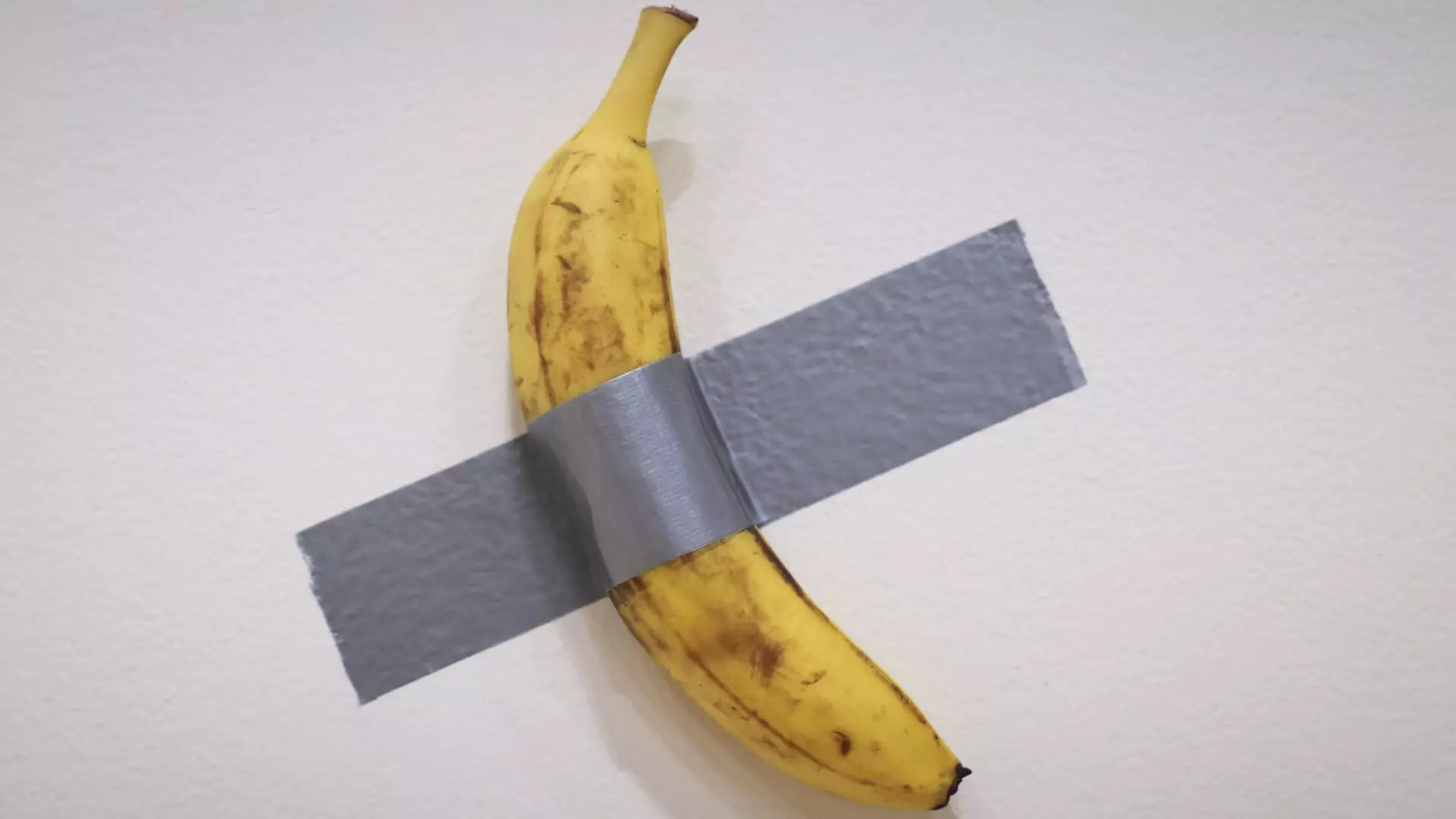In a surprising twist to the art world narrative, crypto investor Justin Sun made headlines recently by purchasing a banana duct-taped to a wall for an astonishing $6.2 million. The work, cleverly named “Comedian,” is the brainchild of Italian artist Maurizio Cattelan, who has long been noted for his provocative and boundary-pushing creations. This instance raises critical questions regarding the value of art in a contemporary context dominated by social media, meme culture, and cryptocurrency markets. Sun’s acquisition of “Comedian” is not merely an illustration of financial frivolousness; rather, it reflects a deeper and increasingly complex interplay between art and technology that requires our scrutiny.
“Comedian” made waves when it was first unveiled at Art Basel Miami Beach in 2019 with a sale price of $120,000. Since then, it has transformed into a cultural touchstone, igniting discussions around the boundaries of artistic expression. The piece is emblematic of virality, as it swept through social media channels, captivating audiences with its audacious simplicity and absurdity. While traditional art forms often depend on deep cultural references and literary contexts, Cattelan’s work effectively bridges high art and lowbrow humor, appealing to a broad demographic.
In fact, the image of a fruit stuck to a wall encapsulates a shared understanding of the absurdity intrinsic to modern life, making it a fertile ground for memes and virality. Sun succinctly notes that owning this artwork is akin to possessing a moment in cultural history that transcends typical definitions of both art and value. The banana’s fame has morphed it into an icon beyond its physical properties, which brings forth an interesting commentary on how value is attributed in today’s art market.
Interestingly, the mechanics of this sale dissect the concept of ownership in the art world, especially with the luxury of leveraging cryptocurrencies. The sale encompassed not just the banana itself but also a roll of duct tape and a certificate of authenticity, which delineates the value derived from the certifying document rather than the object it’s meant to represent. This notion parallels many critiques surrounding non-fungible tokens, or NFTs, where ownership is dictated by digital certificates tethered to otherwise intangible assets.
This evolving paradigm leads us to reconsider fundamental questions about what we define as “art” and how ownership is validated. In the context of Cattelan’s work, one could argue that each new banana is akin to a new edition of an art piece, mirroring the ethos of NFTs where the essence lies in the certificate of legitimacy instead of the physical object itself. The seller’s decision to accept cryptocurrencies is not coincidental, but rather illustrates an understanding of how digital currencies and their communities influence contemporary art.
The sale of “Comedian” occurs against the backdrop of a revitalizing art auction market in New York, with over $1 billion worth of art changing hands in a matter of days. Following two years of market stagnation, this sudden surge appears to give credence to theories of an art market revival spurred by recent stock market boons and renewed confidence among affluent collectors in a post-election atmosphere. Other prominent sales, including Monet’s water lilies at $65.5 million and Rene Magritte’s painting fetching an impressive $121 million, signal not just a return to form but also a collective pushback against the austerity that hampered high-end auction houses.
This rebound may tempt collectors to venture into celebratory purchases, but it invites reflection on sustainability. Buyer’s remorse looms large for those driven by trends rather than deep appreciation of art’s intrinsic values. While Justin Sun’s playful ownership of “Comedian” might inspire smiles, it’s essential to consider whether purchasing art influenced by memes and fleeting cultural moments leads to true cultivation of contemporary art appreciation, or if it’s merely a momentary dalliance within an ever-changing market.
Justin Sun’s purchasing of “Comedian” serves as a quintessential narrative, interlacing themes of art, cryptocurrency, and cultural commentary. While Sun sees this artwork as a milestone—sparking conversations and fueling creativity within art communities—there is a wider conversation begging to be had around the meanings we ascribe to art in an age dominated by materialism, technology, and rapid cultural shifts. The art market may be on the upswing, but whether it can sustain this interest while holding to the traditional values of authenticity and depth in creative expression remains to be seen.

